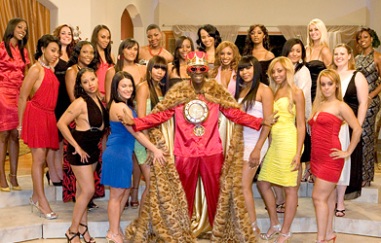For this weeks blog post I decided that I would write about women in pornography considering all of the media surrounding Duke University student, Miriam Weeks, or better known by her on screen name “Belle Knox.” Miriam Weeks was “outed” by a fellow student. Miriam expected to go to Duke and remain an undercover porn star, and that no one would ever know. After watching interviews with Belle Knox, she explains that the main reason that she decided to do porn was in order to pay for her Duke education. She explains that she simply cannot afford her $43,000 tuition each year, and that doing porn was her best option. She claims that she “only does what she is comfortable doing on screen” and that porn can serve as a form of female empowerment. Throughout this entire interview I must admit I was extremely frustrated. At one point in the interview Belle claimed that she turned to porn because she is only 18 and lacks skills for other jobs. When she said this I found myself even angry because I definitely do not believe that her only skill in life is being able to have sex… She followed up this statement by saying she would never want to take out college loans, seeing that they would stay with her for quite some time. In addition to this, she also blames the economy, saying that she would never get interviews or responses to applications she turned in. I completely disagreed with everything that she had to say throughout the several interviews I watched. I believe that pornography is one of the most degrading forms of women in the media. I believe that sex is an act that should only happen between people who are in love, and that it should definitely not be put on the web for everyone to see. I feel that the fact that Miriam/Belle said that she is “18 and lacked skills” sends a message to the media that women as a whole lack skills, therefore they should turn to porn for easy money. I do not understand how the depiction of women through porn is not equivalent or even worse then prostitution. I especially feel that pornography is a horrible depiction of women in the media because mainstream porn is based primarily on straight male fantasies, and is not an accurate representation of anything approximating sex in real life. The fact that the goal of pornography is to sexually arise viewers, is completely upsetting, especially when women are providing men with a false representation of women and their morals. I am not speaking in the fact that I think pornography is a horrible depiction of women in the media just through videos, but also through a variety of other media. Pornography comes in forms of printed literature, photos, drawings and audio recordings as well. I think that this provides a disgusting portrayal of the women in the media, and completely misrepresents the female population as a whole. Some people, like Belle Knox, claim that pornography is a means for women’s sexual freedom and self-expression, however, I again have to completely disagree. I feel that pornography depicts women in a very unkind and degrading way. Pornography provides viewers with the idea that women only belong in once place, that being in bed with a man. Pornography sets an idea that women exist only for the sexual pleasure of men. In addition to this, according to my research, studies show that after men view pornography, they hear less of what women say in a professional setting. It is very concerning that some women are comfortable with the idea of pornography, and the portrayal of our gender in the media through porn. I feel that pornography is extremely wrong, and that women should take stand to ban it because, in my opinion, it is the biggest form of sexual exploitation of women, showing us only as sexual objects and nothing more.
Above is an interview with Miriam Weeks, also known as “Belle Knox”

